Comfrey, or Symphytum by its Latin name, is a herbaceous perennial of the Boraginaceae family, like its cousin borage. It is recognised by its numerous large rough, pointed leaves and by its flowers grouped in small pendulous clusters, white, pink, blue or mauve depending on species and cultivars. It grows wild in ditches, along waterways and in damp meadows. In the garden it spreads rapidly via its suckering stump and becomes a very interesting groundcover, always planted in cool spots.
Often used in permaculture, our tutorial explains how to plant it correctly and help it thrive!
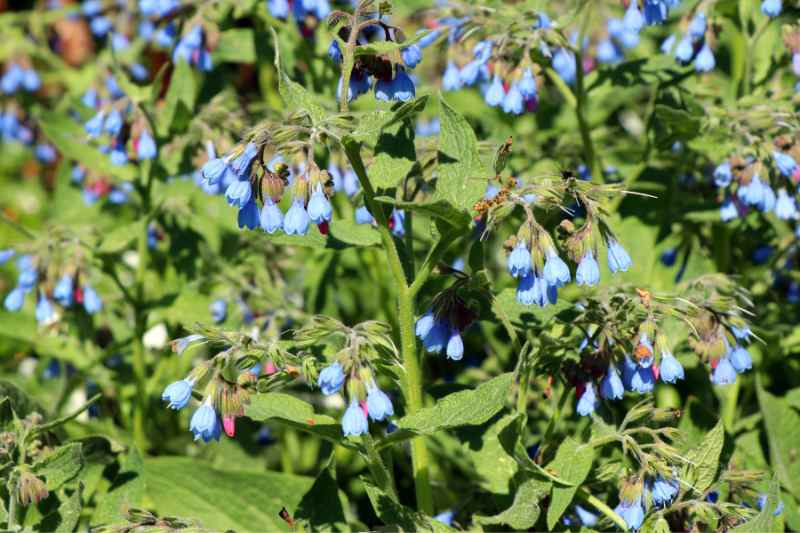
Why grow comfrey in your garden?
Simply because comfrey is a Swiss-army-knife of a plant! It has many virtues and applications in the garden, vegetable patch… or on the plate:
- You can plant comfrey for its ornamental qualities and long flowering, as it renews from spring to early summer, in cottage, country or naturalistic gardens.
- You have probably heard of comfrey manure: like horsetail or nettle manures, it is one of the most used fertilisers in the garden. So keeping a few plants just to make homemade comfrey manure is worthwhile, and it can be used diluted.
- Leaves rich in potassium, phosphorus and calcium also make it useful as beneficial organic mulch for soil, which it enriches and whose structure it improves (in garden and vegetable patch): it is a wonderful green manure!
- Comfrey is also known for accelerating decomposition of plant material: it is therefore very useful in the compost heap, where its nitrogen and minerals act as a natural compost activator.
- It can also be chosen for its nectariferous and melliferous qualities, in wild gardens that favour biodiversity, to attract bees.
- But also for its very effective groundcover effect: comfrey forms large clumps with abundant leaves. It is in leaf for a long period, from March to November, providing good base coverage under trees or in naturalistic borders. Its flowering is also fairly long, between April and July depending on region and aspect.
- Used since Antiquity for its medicinal properties (anti-inflammatory and healing), it was part of medieval herb gardens for treating burns and bruises, and even asthma (leaves and root).
- Comfrey is edible, but to be consumed in limited quantities, as it is toxic (presence of pyrrolizidine alkaloids). Young leaves are mainly cooked in boiling water, used in soups or mixed with other vegetables in a gratin. Delicious comfrey fritters can also be made, surprising with their savoury iodine-like taste.
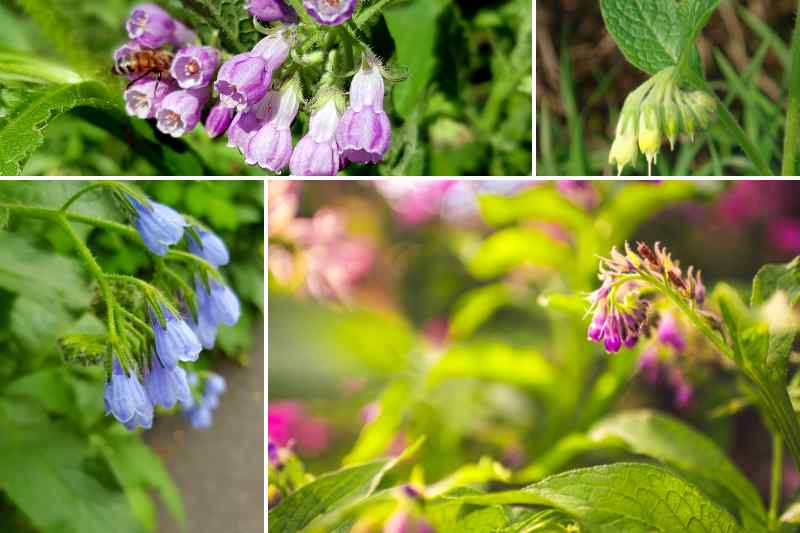
Where to plant comfrey?
Very hardy perennial (to -30°C), comfrey quickly forms a floriferous mat. It can be planted throughout mainland France and in Belgium. It nevertheless prefers humid atmospheres.
Comfrey's needs are easy to remember, as you should reproduce the conditions it finds in nature: soil is the most important factor, as it must remain cool, even moist. Ideally clayey and rich in organic matter, avoiding overly acidic soils. But ordinary soil often does the job.
Aspect matters little, it adapts, although partial shade is preferable. Comfrey also tolerates full sun or shade (where it will simply flower a little less abundantly).
We do not recommend growing it in a pot; it is a garden perennial, as it will gain room.
Finally, while ornamental in a wild border, it can obviously be planted in the vegetable patch, and not far from fruit trees, to attract pollinators and to make spreading (mulch or manure application) easier.
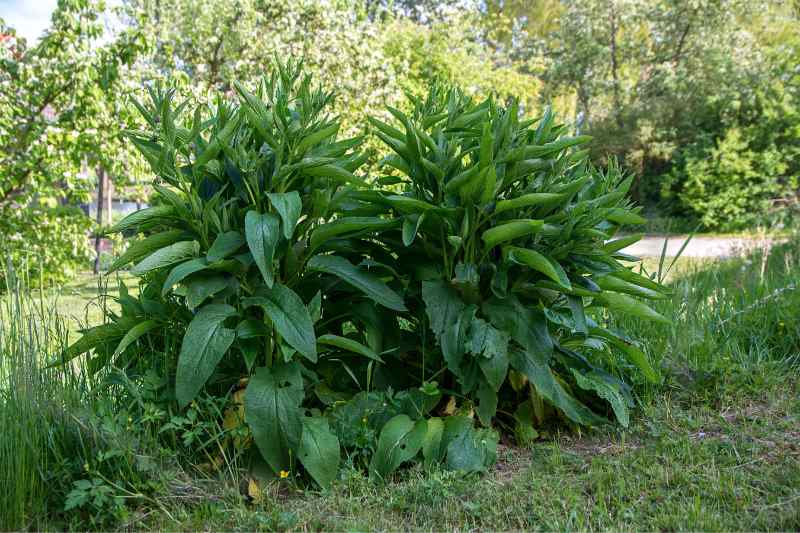
Secrets for a successful growing
- Plant three plants per square metre, sufficient to cover the soil in time.
- Plant in autumn, ideal season to ensure good root establishment, or in spring.
- Plant in cool, clayey or compact soil rich in humus, it likes that!
- Mulch to keep the soil as cool as possible: a little compost spread as a mulch in spring will also help fertilise the area.
- Harvest it to use for your manures or as mulch: cutting leaves several times per season also helps limit its spread and encourages new growth.
- Do not let it invade the space: remove unwanted shoots and take off flowers to prevent unwanted self-seeding.
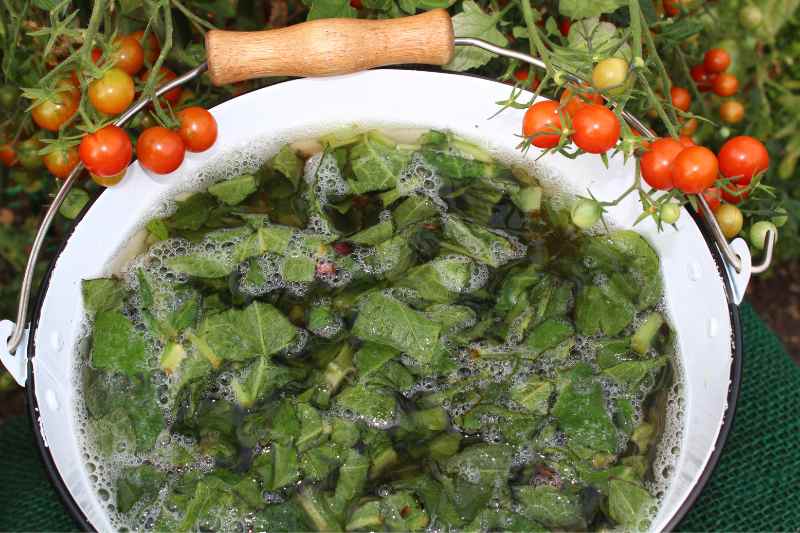
When to harvest?
You will make at least 3 harvests per year if comfrey thrives in your garden, which will be very useful for the uses mentioned above (mulch at plant bases, manure or possibly in cooking). Cut young leaves before flowering for optimal quality (they contain more nitrogen), between May and September. Cut a clump at soil level to remove all leaves, stems and flowers. Comfrey will reform and after a few weeks you can harvest leaves again!
If you use it as a leafy vegetable, it will mainly be incorporated into soups, or eaten raw in salads. Leaves have a pronounced iodine-like flavour (like borage flowers).
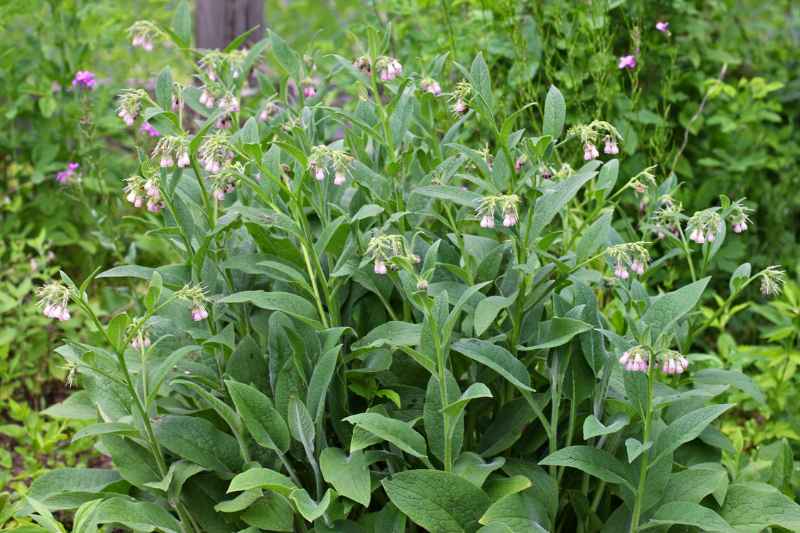
Comfrey care
It requires almost no care, as comfrey is a robust and vigorous perennial. Its dense foliage leaves little room for adventive plants, especially if the area has been mulched. Deadhead spent flowers to further strengthen foliage.
Just be careful of its potentially invasive character by limiting spontaneous self-seeding.
Propagating comfrey
Comfrey is multiplied by sowing, or by division or propagation by cuttings of roots.
Sowing in buckets or in a nursery takes place between February and April. Division of stumps is another effective way to multiply comfrey and transplant it elsewhere in the garden: gently separate the roots of a mature plant in spring. For cuttings, cut root segments 5–10 cm long and plant them horizontally in the soil. Water generously after planting to encourage root establishment.
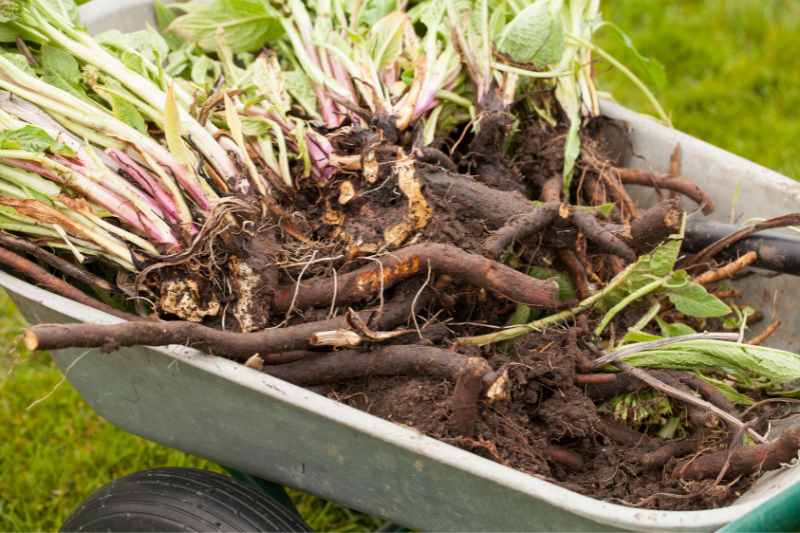
To learn more
- To know everything about comfrey, read our full sheet: Comfrey: planting, sowing, uses
- Find our range of comfreys in our online nursery.
































Comments